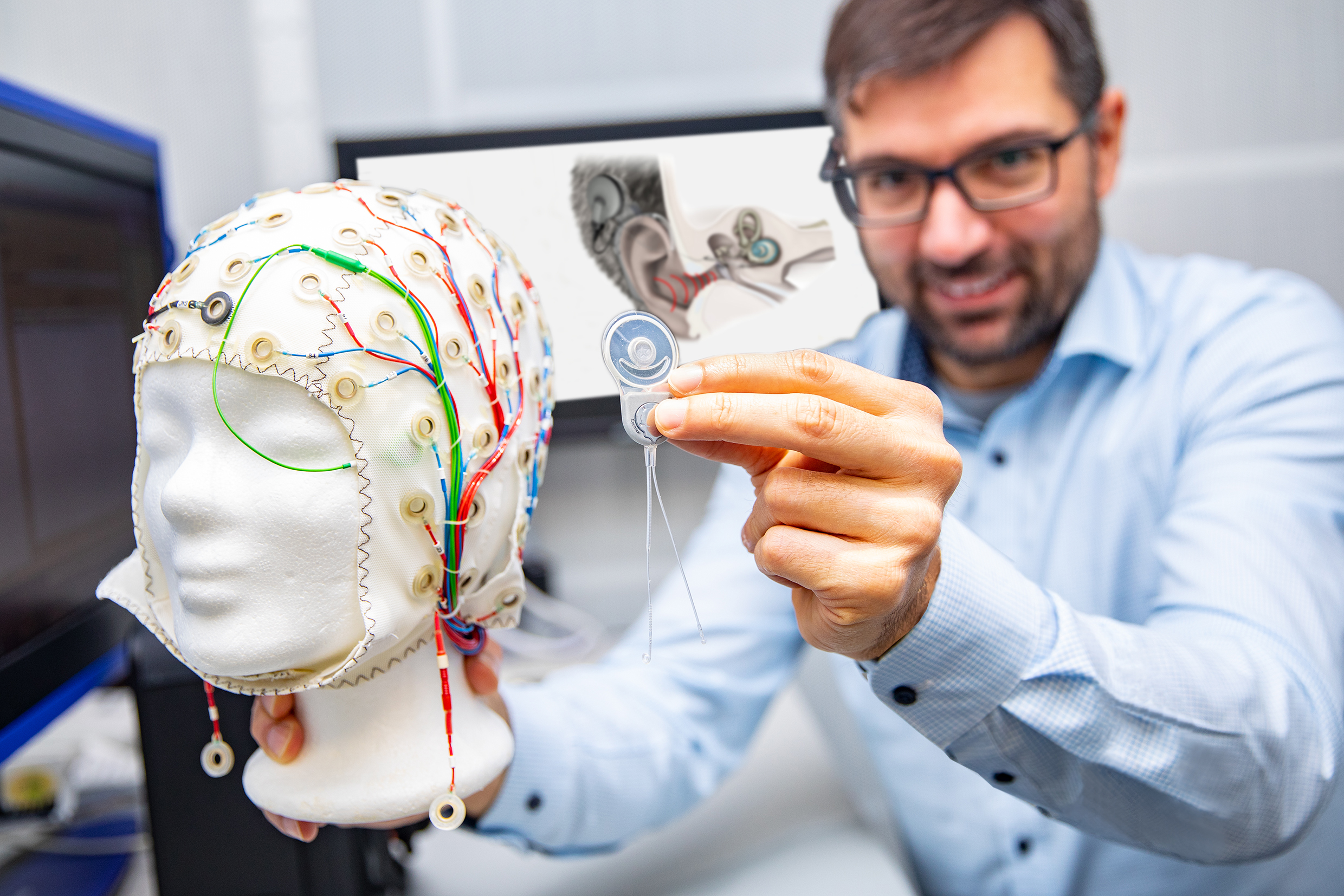Expert in hearing prosthetics receives renowned ERC funding award from the European Union

Using an EEG cap, Professor Dr. Waldo Nogueira Vazquez measures the acoustic and electrical signals during auditory processing in the brain Copyright: Karin Kaiser / MHH
04/12/2022
About 15 million people in Germany suffer from hearing disorders. Among the elderly, hearing loss is the most frequently impaired sensory perception. But even children and newborns can suffer from hearing loss, such as inner ear deafness. In this case, acoustic signals are not transmitted to the auditory nerve. In this case, inner ear prostheses - so-called cochlear implants (CI) - can help. They stimulate the auditory nerve with the help of electrodes. However, both older and very young patients may still have residual hearing, especially in the range of low tones.
Professor Dr. Waldo Nogueira Vazquez, head of the hearing prosthetics research group at the Department of Otorhinolaryngology at Hanover Medical School (MHH), wants to find out how residual hearing can be assessed and preserved more precisely, how the electrical stimulation by the CI interacts with the acoustic signal conduction and how a new type of hearing prosthesis can be developed from these findings. For his project "READIHEAR", the scientist has now received the "ERC Consolidator Grant" from the European Research Council (ERC), one of the European Union's highest scientific grants for excellence. It will be funded with a total of around two million euros over five years.
Identifying and preserving residual hearing
If residual hearing is present, hearing aids and CI can be used simultaneously in the same ear. With this concept of combined electric-acoustic stimulation (EAS), the hearing aid amplifies the low frequencies acoustically, while the CI stimulates the middle and high frequency ranges electrically. The inner ear processes the acoustic and electrical stimuli simultaneously. The disadvantage: When inserting the CI, the very sensitive structures of the cochlea and thus also the residual hearing can be damaged. The scientist now wants to develop objective diagnostic instruments that determine how much hearing potential is present at all, especially in newborns, and that simultaneously monitor low-frequency hearing during insertion.
Interaction between hearing aid and cochlear implant
In order to optimally match residual hearing and CI then, Professor Nogueira Vazquez wants to investigate the basic interaction mechanisms between electrical and acoustic stimulation across the entire auditory pathway from the cochlea to the auditory cortex in the brain. "In addition, READIHEAR will test a new type of hearing prosthesis that makes use of the interaction mechanisms between acoustic and electrical stimulation through minimally invasive electrodes," he explains. These will then no longer be located deep inside the cochlea, as is currently the case, but at the entrance or even completely outside.
"Hearing loss significantly impairs the exchange of information and can cause frustration, loneliness and isolation for those affected," says Professor Nogueira Vazquez. The new developments will benefit a large number of people with hearing loss across the lifespan, he is convinced. "This includes young children, who will benefit from improved hearing diagnostics, to older people, who will be helped by the new gentler EAS technology to treat their age-related hearing loss."
Keyword cochlear implant: A cochlear implant (CI) can help in cases of inner ear deafness or profound hearing loss. The prerequisite is that the auditory nerve itself is still intact. The CI captures sound waves from outside via a microphone, converts them into electrical signals and transmits them to electrodes in the cochlea. These stimulate different sections of the auditory nerve, which then transmits the stimuli to the brain, where the actual hearing impression is created.
SERVICE:
For more information, contact Professor Dr Waldo Nogueira Vazquez, nogueiravazquez.waldo@mh-hannover.de telephone (0511) 532-8025.